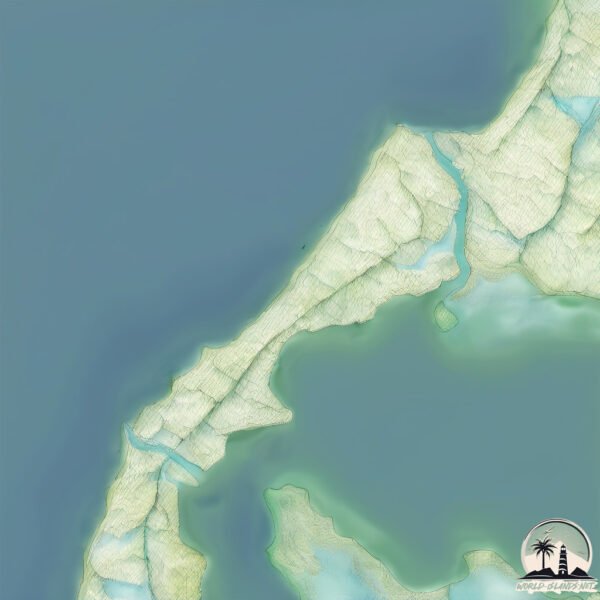Welcome to Avocet , a Temperate island in the Indian Ocean, part of the majestic Indian Ocean. This guide offers a comprehensive overview of what makes Avocet unique – from its geography and climate to its population, infrastructure, and beyond. Dive into the details:
Geography and size of Avocet
Size: 23.8 km²Coastline: 38.6 kmOcean: Indian OceanSea: Indian OceanContinent: Oceania
Avocet is a Medium Island spanning 24 km² with a coastline of 39 km.
Archipel: –
Tectonic Plate: Australia – A major tectonic plate covering Australia, New Zealand, and parts of the Indian and Pacific Oceans, known for its relative stability and occasional seismic activity.
The geographic heart of the island is pinpointed at these coordinates:
Climate and weather of Avocet
Climate Zone: TemperateClimate Details: Hot-Summer Mediterranean ClimateTemperature: Hot Summer
Climate Characteristics: Characterized by hot, dry summers and mild, wet winters, typical of coastal areas with abundant sunshine.
Topography and nature of Avocet
Timezone: UTC+08:00Timezone places: Australia/PerthMax. Elevation: 13 m Mean Elevation: 6 mVegetation: WetlandTree Coverage: 47%
The mean elevation is 6 m. The highest elevation on the island reaches approximately 13 meters above sea level. The island is characterized by Plains: Flat, low-lying lands characterized by a maximum elevation of up to 200 meters. On islands, plains are typically coastal lowlands or central flat areas.
Dominating Vegetation: Wetland
Vegetation: 10 vegetation zones – Very Highly Diverse Island
Infrastructure and Travelling to Avocet
Does the island have a public airport? no .
Does the island have a major port? no .
The mean population of Avocet is 1039 per km². Avocet is Densely Populated. The island belongs to Australia .
Continuing your journey, Rottnest is the next notable island, situated merely km away.
Crib Creative presents 74 Avocet Island Quays, Wannanup
93 Avocet Island Quays, Wannanup
This Cachet built, open and bright near new masterpiece is comfortably ...
This Cachet built, open and bright near new masterpiece is comfortably liveable and offers an elegant canal lifestyle to maximum ...
WANNANUP, 77 Avocet Island Quays
77 Avocet Island Quays WANNANUP WA Marketed by: Realmark Mandurah 9537 ...
77 Avocet Island Quays WANNANUP WA Marketed by: Realmark Mandurah 9537 4444 realmark.com.au Contact: Greg Penn Tel ...
Australia is classified as Developed region: nonG7: Developed economies outside of the Group of Seven, characterized by high income and advanced economic structures. The level of income is High income: OECD.
News – Latest Updates and Headlines from Avocet
Stay informed with the most recent news and important headlines from Avocet. Here’s a roundup of the latest developments.
Loading...
Please note: The data used here has been primarily extracted from satellite readings. Deviations from exact values may occur, particularly regarding the height of elevations and population density. Land area and coastline measurements refer to average values at mean high tide.

